States of Matter Worksheets
Are you searching for educational materials to teach your students about the states of matter? Look no further than our comprehensive collection of worksheets. Designed specifically for elementary school students, these worksheets cover the key concepts and vocabulary related to the three states of matter: solids, liquids, and gases. With a focus on engaging visuals and interactive activities, these worksheets are ideal for homeschooling parents, classroom teachers, and tutors seeking to enhance their science lessons.
Table of Images 👆
More Other Worksheets
Kindergarten Worksheet My RoomSpanish Verb Worksheets
Cooking Vocabulary Worksheet
DNA Code Worksheet
Meiosis Worksheet Answer Key
Art Handouts and Worksheets
7 Elements of Art Worksheets
All Amendment Worksheet
Symmetry Art Worksheets
Daily Meal Planning Worksheet
What is the definition of a solid?
A solid is a state of matter characterized by particles that are closely packed together with a fixed shape and volume. Unlike liquids or gases, solids have strong bonds between their particles, resulting in a rigid and stable structure. The arrangement of atoms or molecules in a solid is highly organized, giving it a specific geometric shape and distinct physical properties.
How is a liquid different from a gas?
A liquid is a state of matter where particles are close together but can still move past each other, maintaining a definite volume but taking the shape of its container. A gas, on the other hand, has particles that are further apart and move freely, filling the entire volume of its container. This results in liquids having a definite volume but not a definite shape, while gases have neither a definite volume nor a definite shape.
What does it mean for a substance to undergo a phase change?
When a substance undergoes a phase change, it means that it transitions from one physical state to another, such as from a solid to a liquid, liquid to gas, or vice versa, while the chemical composition of the substance remains the same. During a phase change, energy is either absorbed or released, leading to changes in temperature and/or pressure.
Provide an example of a physical change involving the states of matter.
An example of a physical change involving the states of matter is melting ice to form liquid water. When heat is applied to solid ice, it absorbs energy and its molecular structure breaks down, causing it to change from a solid state (ice) to a liquid state (water) without altering its chemical composition.
How does temperature affect the states of matter?
Temperature affects the states of matter by determining how much energy the particles in a substance have. When a substance is heated, its particles gain energy and move faster, potentially causing a solid to melt into a liquid or a liquid to evaporate into a gas. On the other hand, cooling a substance causes its particles to slow down and come closer together, leading to the condensation of a gas into a liquid or the freezing of a liquid into a solid. This relationship between temperature and the kinetic energy of particles is the basis for the changes in states of matter.
Explain the concept of melting in terms of states of matter.
Melting is the process in which a solid substance changes into a liquid state. At a molecular level, when a solid is heated, the thermal energy overcomes the intermolecular forces holding the particles together, causing them to break free from their fixed positions and begin moving more freely, transitioning into a liquid state. This phase change occurs at a specific temperature known as the melting point, where the solid and liquid phases coexist in equilibrium.
What happens during condensation?
Condensation is the process by which a substance changes from a gas to a liquid state. This occurs when the temperature of the gas decreases, causing the molecules to lose kinetic energy and come closer together, forming liquid droplets. It is the opposite process of evaporation, where a liquid changes into a gas.
Describe the properties of a gas.
A gas is a state of matter that has no fixed shape or volume, as its particles are widely spaced and move freely. Gases expand to fill the container they are in and are compressible. They also have low density compared to liquids and solids. Gases exhibit properties such as diffusion, effusion, and high compressibility. Gas particles constantly move in random motion and have weak intermolecular forces.
How does the arrangement of particles differ in solids, liquids, and gases?
In solids, particles are closely packed together in a regular, ordered pattern, with strong attractive forces holding them in place. Liquids have particles that are still close together but not as ordered as in solids, allowing them to flow and take the shape of their container. Meanwhile, gases have particles that are far apart and move freely, with weak forces of attraction between them, resulting in gases expanding to fill the available space.
Provide an example of a substance that can exist in all three states of matter.
Water is a common substance that can exist in all three states of matter. It can be a solid (ice), a liquid (water), or a gas (water vapor) depending on the temperature and pressure conditions.
Have something to share?
Who is Worksheeto?
At Worksheeto, we are committed to delivering an extensive and varied portfolio of superior quality worksheets, designed to address the educational demands of students, educators, and parents.

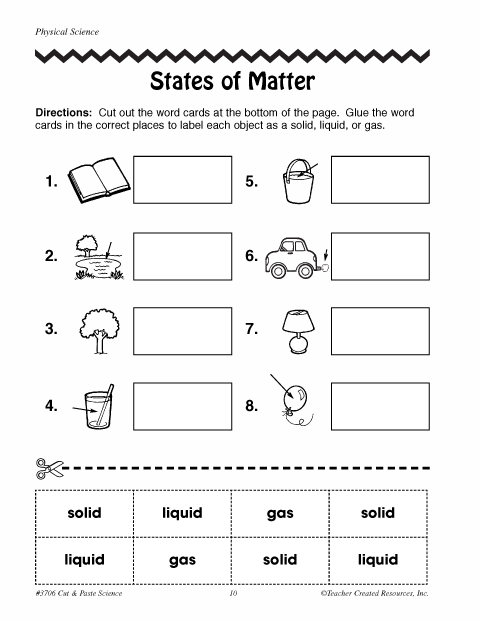



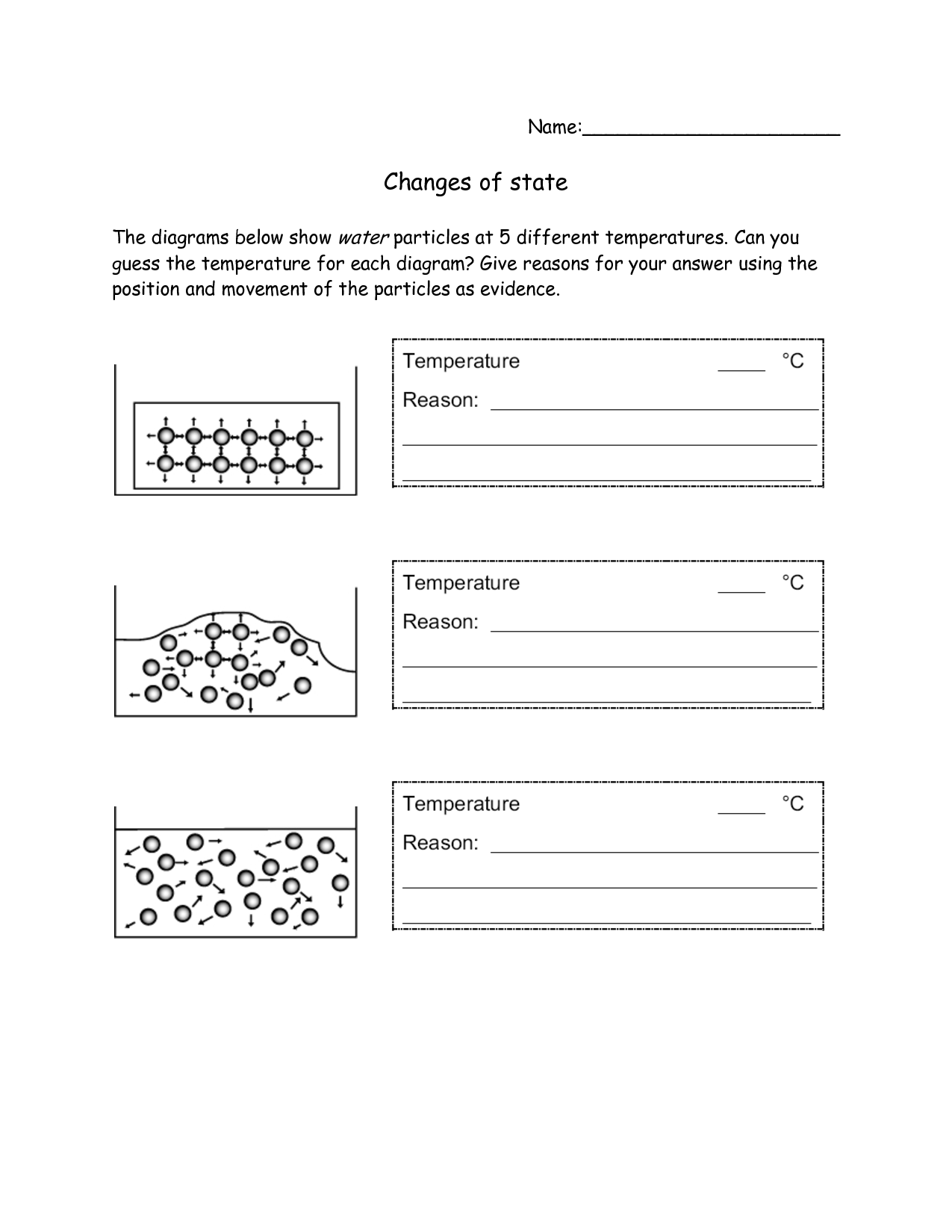
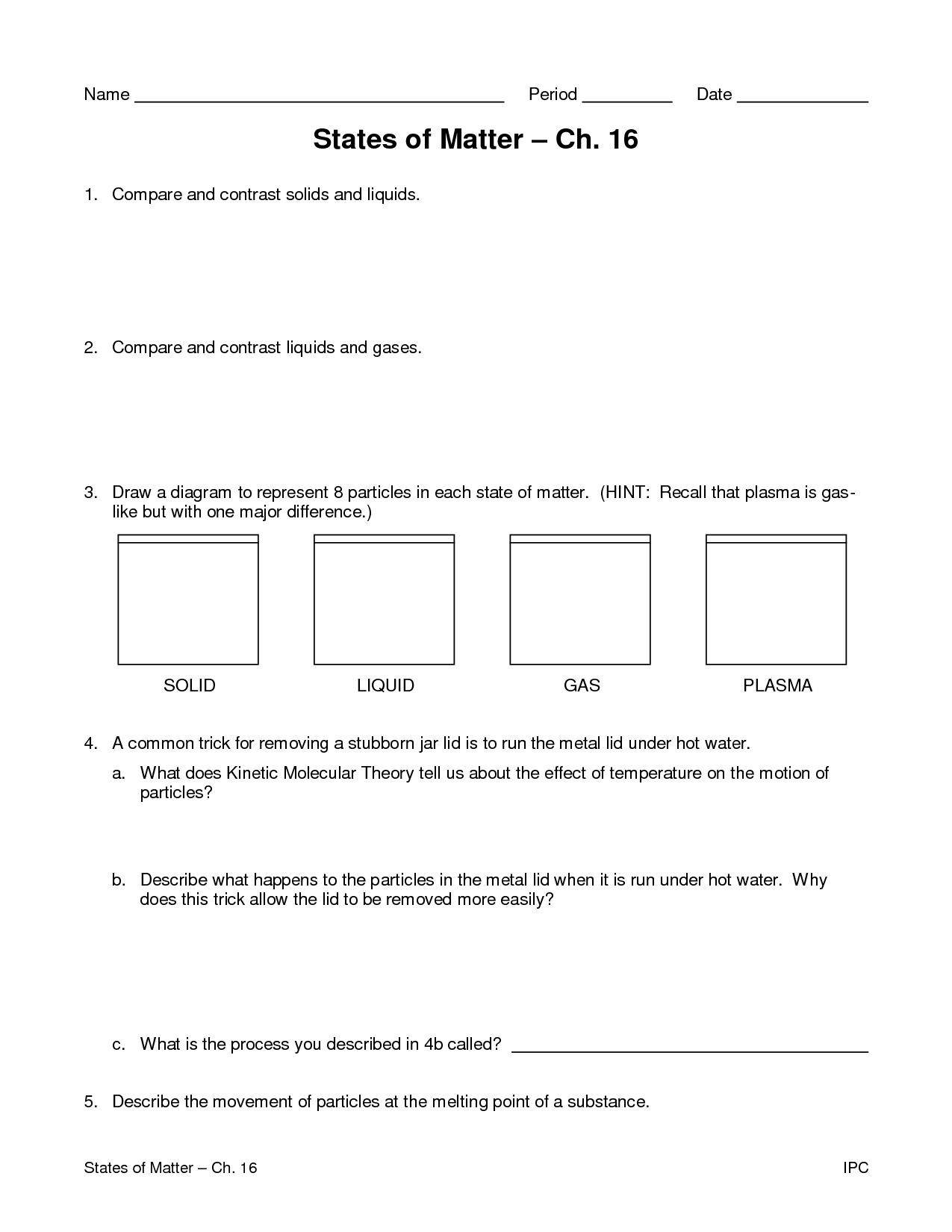
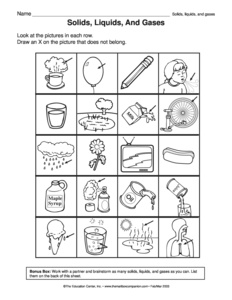
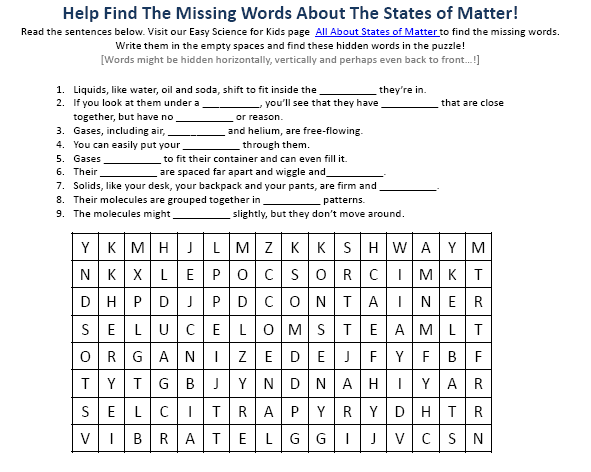
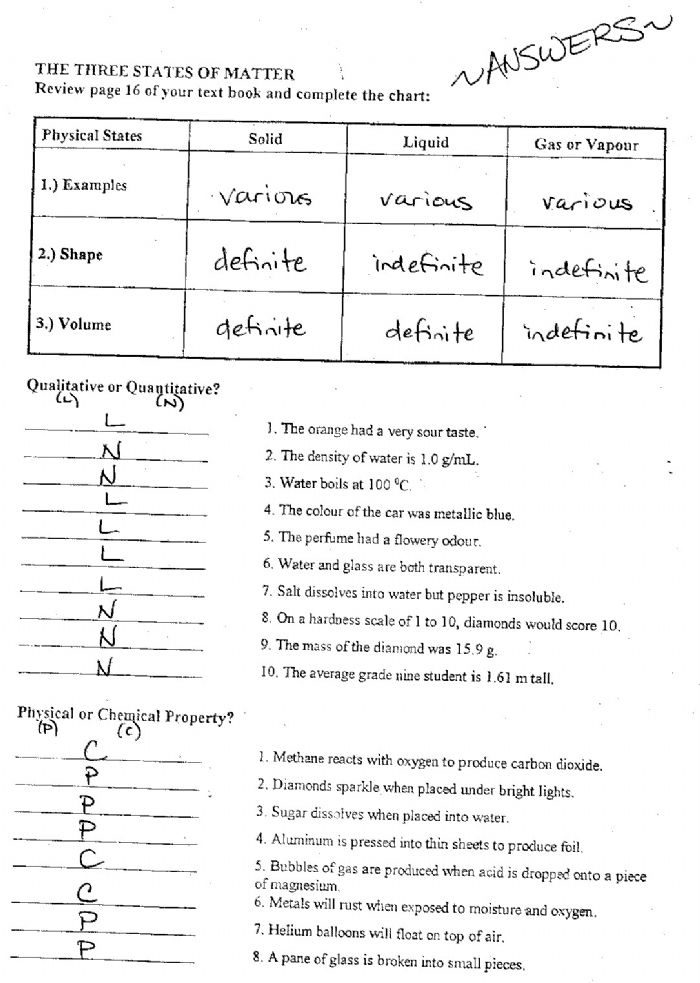

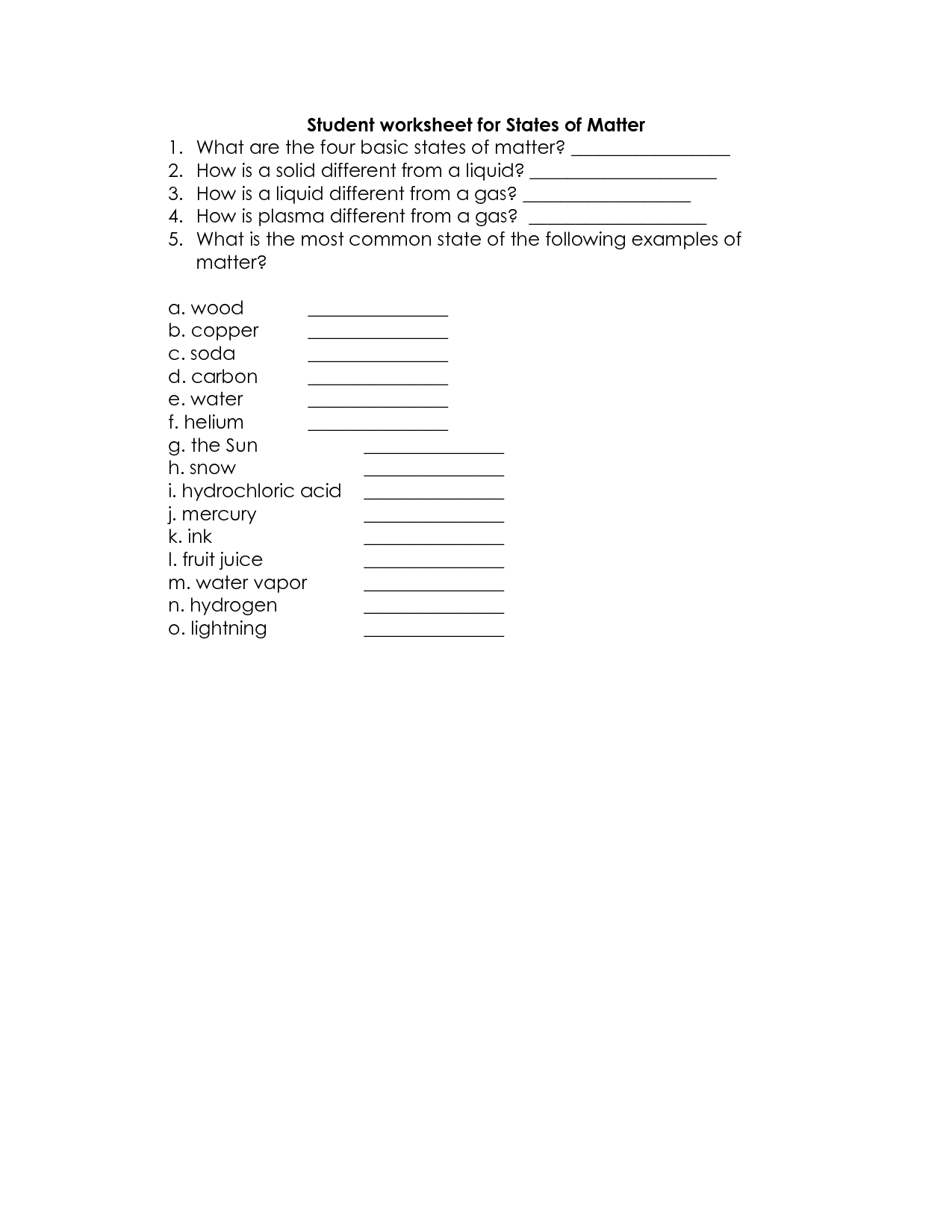
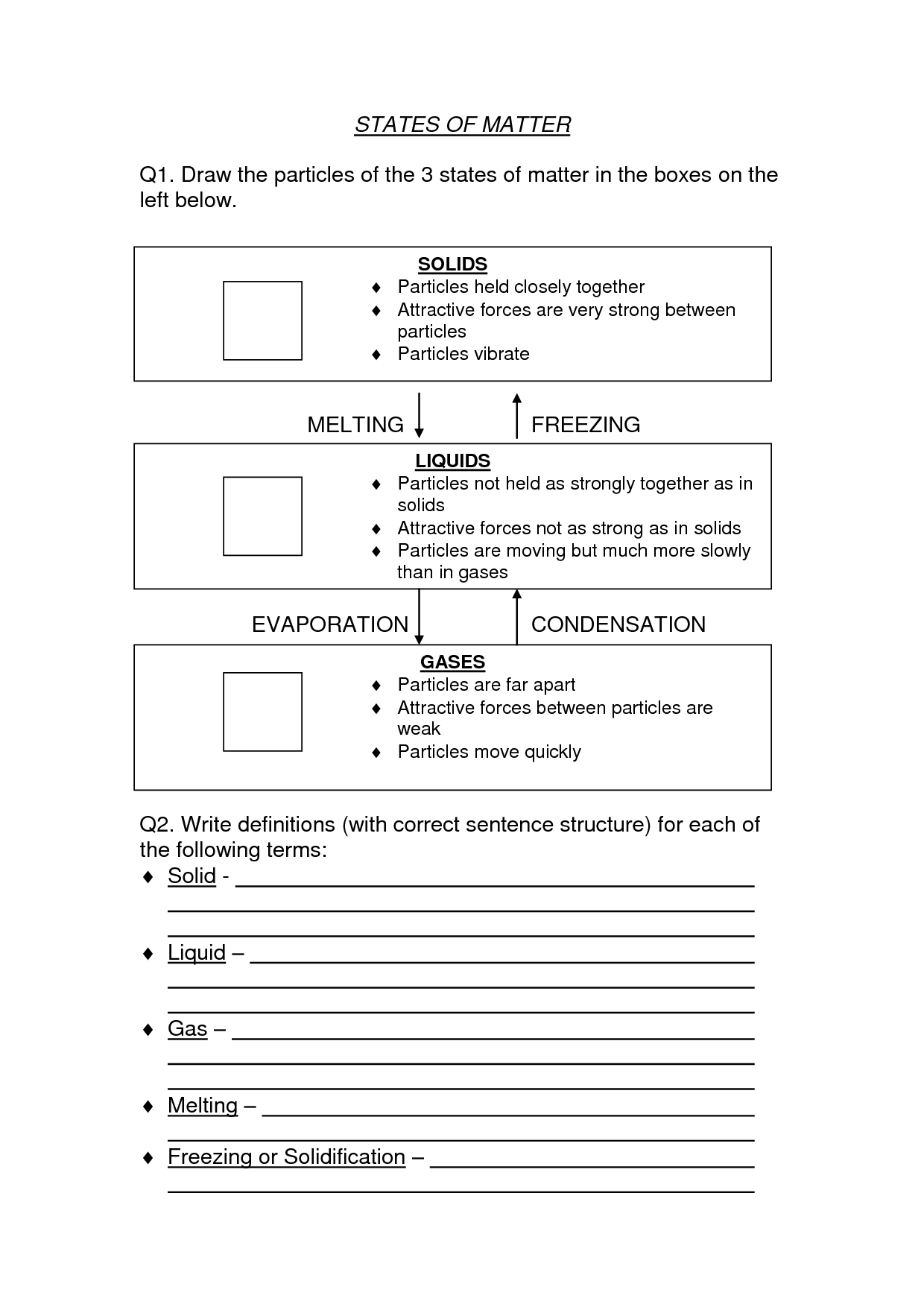
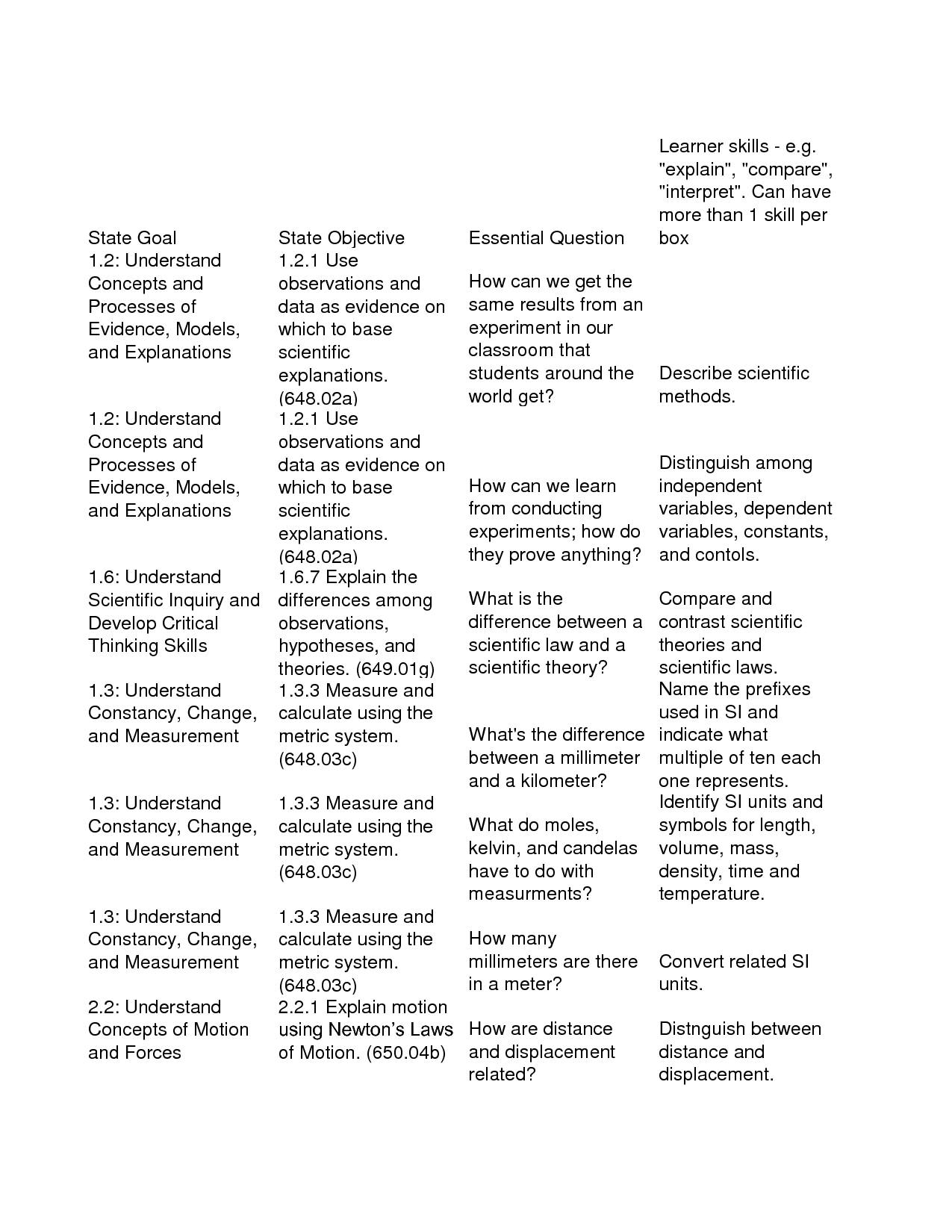














Comments